Sometimes, the best days begin with a simple intention and unfold into something quietly magical. Yesterday was one of those days. The plan was straightforward: start with a peaceful morning yoga session and see where the day might take us. What followed was a beautiful mix of cosmic spectacle and local heritage with a partial solar eclipse, some cereal box science, and a walk through centuries of canal history along one of Derbyshire’s most fascinating waterways.
A Cosmic Nibble on the Sun
With yoga finished and the sky slowly brightening, we turned our attention upward for a rare treat: a partial solar eclipse. The forecast promised a mix of sunshine and cloud, so we came prepared with the most delightfully low-tech viewing solution, pinhole camera made from cereal boxes.
We used a rectangle of white paper inside the box, a small peep hole at one side of the top and a carefully pierced bit of foil at the other. We found a clear spot outdoors, turned our backs to the sun and waited. Slowly, the brilliant golden disc began to change. First came a nibble, then the nibble got bigger. It looked as though the sun had a bite taken out of it.
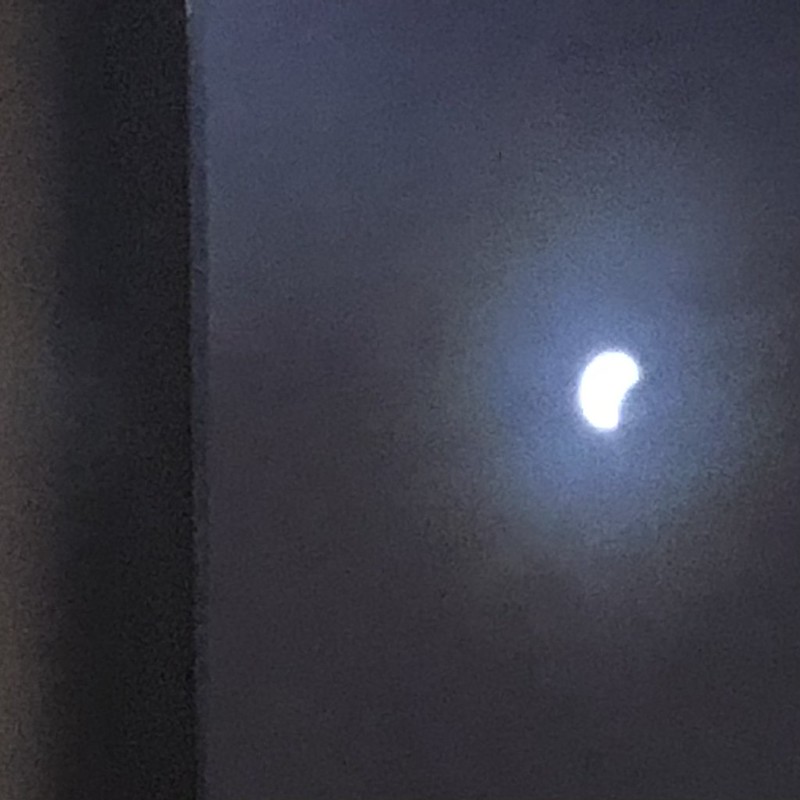

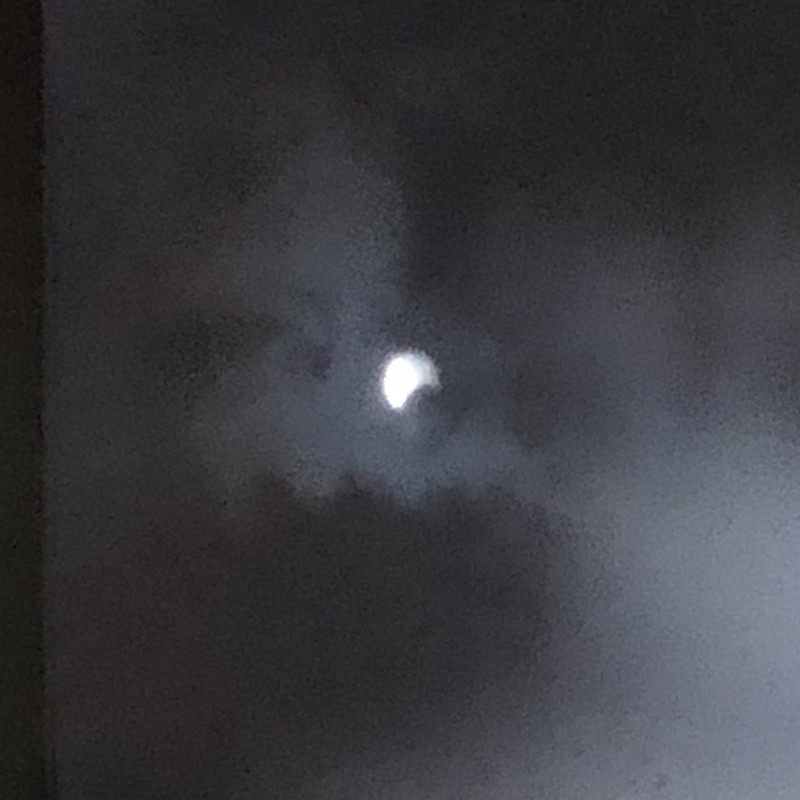
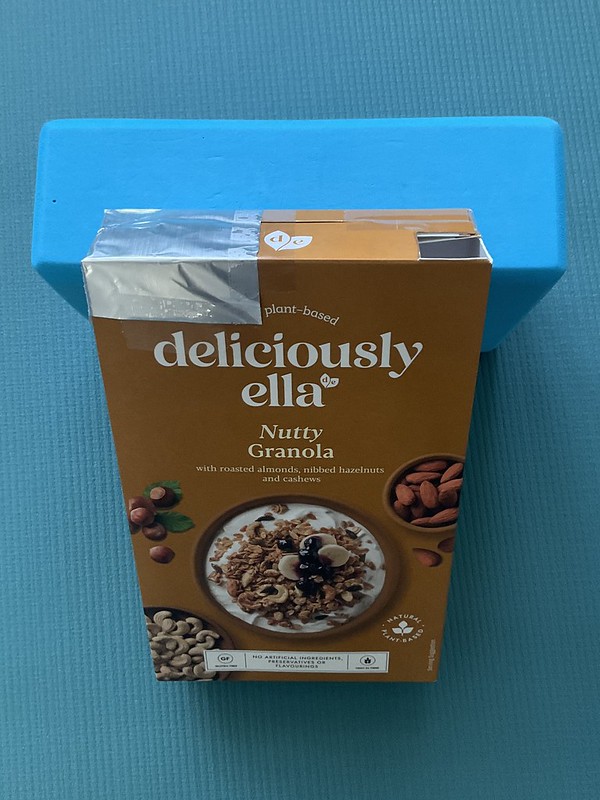
A curious passersby stopped to see what we were up to. We invited them to look through our handmade viewers and that small gesture sparked conversation, connection and a lovely shared experience. For a few moments, strangers became eclipse-watchers together.
A Stroll Through Time and Nature: The Chesterfield Canal
Energised by our skyward adventure, we set off to explore something closer to home, a walk along the Chesterfield Canal, where nature and history blend beautifully.
We caught the bus from Chesterfield town centre to Staveley and got off just outside the library. From there, it was a short stroll downhill to Staveley Town Basin, where the past and future of the canal come together.
There was nothing happening over the weekend although it was immediately obvious there was a lot of work going on to extend the canal by another 400 metres. This is just one more step toward their long-term goal of restoring the entire 46-mile stretch of canal from Chesterfield to the River Trent.
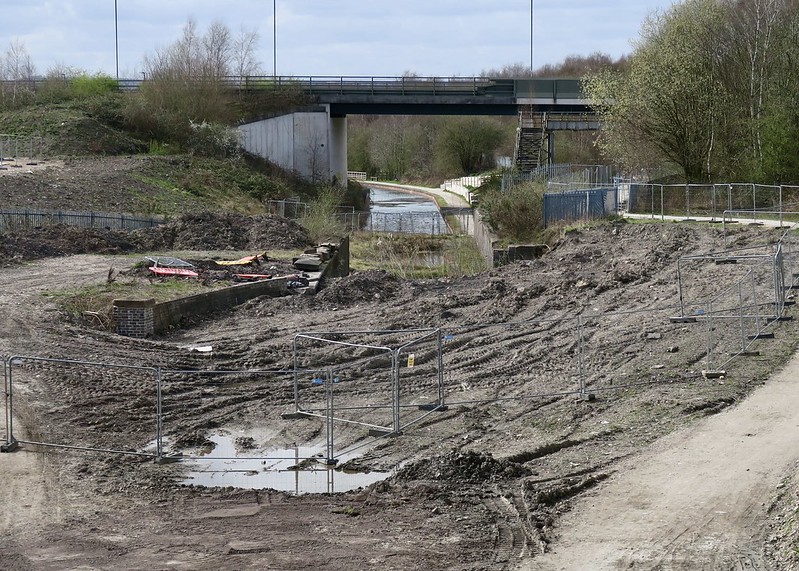
Originally designed by James Brindley and opened in 1777, the Chesterfield Canal played a major role in transporting coal, iron and other goods. Over time, it fell into disuse due to competition from railways, mining subsidence, and the collapse of the Norwood Tunnel. What was once a vital industrial waterway became overgrown and largely forgotten.
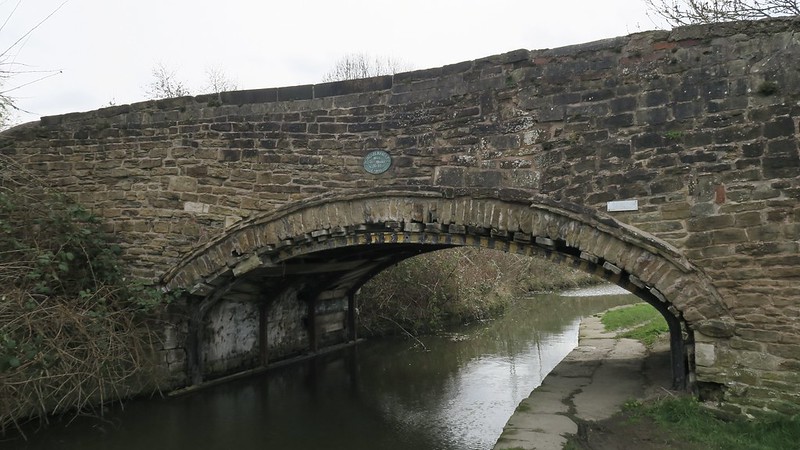
That began to change in the late 20th century when local enthusiasts formed the Chesterfield Canal Society, now known as the Chesterfield Canal Trust. Their dedication, along with support from volunteers and funding from various sources, has led to the restoration of many miles of canal and several locks.
As we walked westward toward Chesterfield, we passed a series of locks — each one with its own unique history and character:
- Staveley Town Lock (2013–16) was built to help boats pass under the Harrington Railway Bridge and represents a blend of modern engineering and traditional design.
- Staveley Works (Hollingwood) Lock (1889–92) was originally constructed to accommodate a re-routed railway and highlights how industry shaped the canal.
- Dixon’s Lock (1994–95) was rebuilt from scratch by volunteers after coal extraction led to the destruction of the original structure.
- Bluebank Lock and Wheeldon Mill Lock are nestled in quiet, scenic sections of the towpath, where restored heritage sits beautifully in the surrounding greenery.
- Tapton Lock (Ford Lane) was one of the earliest restored sections, completed in the 1990s. Today, it’s a popular place for canoeing and family walks.
We found two particularly good places to stop and rest along the way:
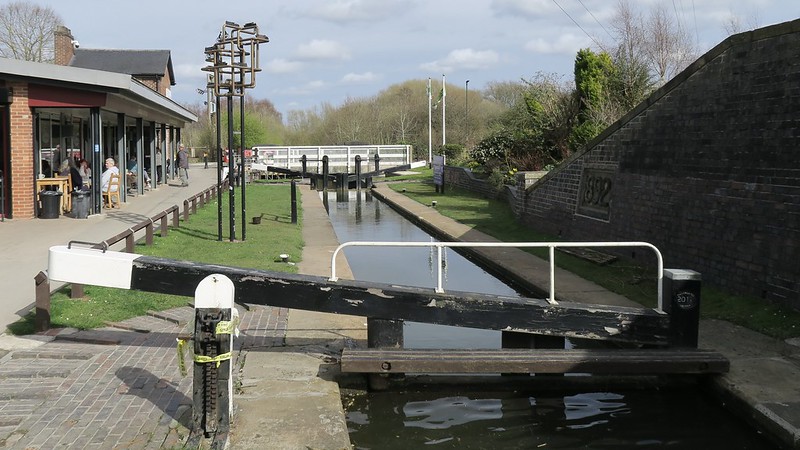
Hollingwood Hub is a restored historic building that now houses a café and the Chesterfield Canal Trust offices. It’s a lively meeting spot for volunteers and visitors alike, and the ideal place for a warm drink and a chat about canal heritage.
Tapton Lock Visitor Centre, run by the Canal and River Trust, is another welcoming place to stop. It has a café, information centre, and even canoe hire in the warmer months. Families often gather here to feed the ducks or enjoy a short paddle.
The towpath was rich with the colours of early spring: primroses, wood anemones and forget-me-nots softened the edges of the trail. We even spotted a grey wagtail darting between branches, a little flash of yellow.
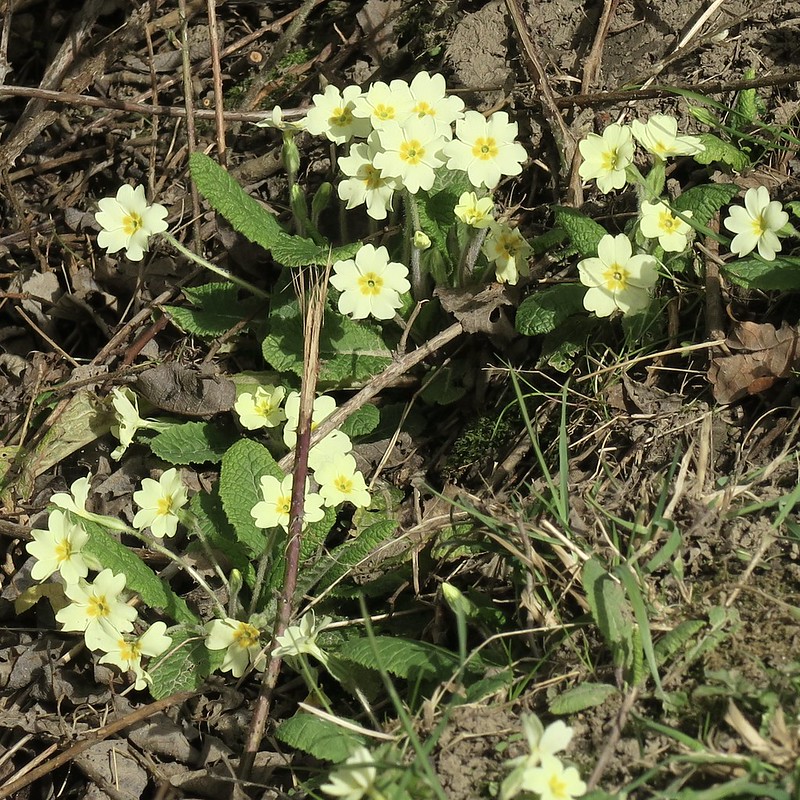
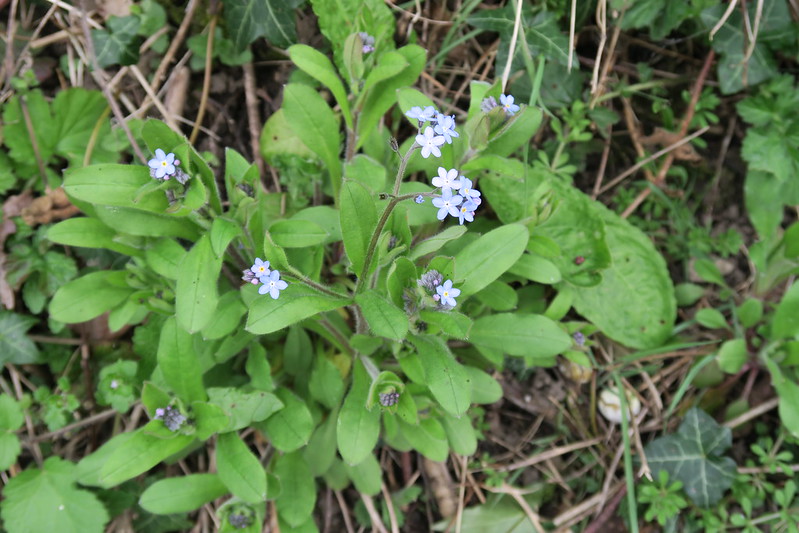
At the same time, signs of recent flooding were clear. Bits of plastic debris caught in high tree branches reminded us that even restored environments remain vulnerable. It was a subtle call for continued environmental care, even as we celebrate what has already been reclaimed.
As we approached Chesterfield, the canal merged with the River Rother. This area was once home to several canal basins, where goods were loaded and unloaded. Although these have long since been filled in or developed.
Currently, 38 miles of the canal are navigable. Around 8 miles remain to be restored. Every section that reopens is a result of thousands of volunteer hours, grant applications and grassroots determination. The long-term dream is to fully reconnect Chesterfield to the River Trent by boat.
By the time we arrived back at Chesterfield Railway Station, we were content and a little tired. The good kind of tired that comes from being outdoors and engaged. It had been a day of simple wonders and rich learning. A glimpse of the sun’s dance through the sky. A walk through industrial history. Conversations with strangers. And plenty of inspiration for our next adventure.
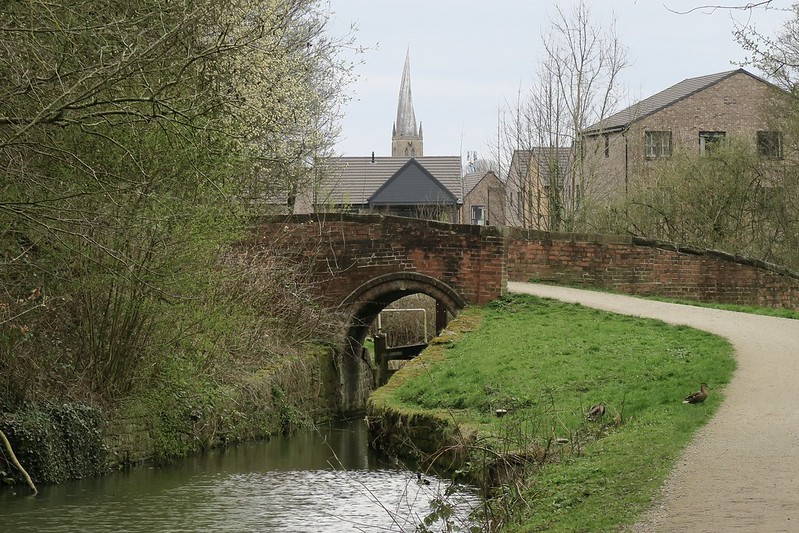
We’ll definitely be back. Next time, we’re thinking about tackling the entire length of the Cuckoo Way. The long-distance footpath that follows the canal’s full route. The path gets its name from the nickname given to Chesterfield Canal boats by Trent boaters. Once a term of derision, the name has since been embraced by the community as a symbol of quiet strength and pride in local heritage.
Plan Your Own Visit
- Chesterfield Canal Trust
Learn about current restoration projects, volunteering opportunities, and how to support the canal. - Hollingwood Hub and Tapton Lock Visitor Centre
Enjoy great cafés, friendly faces, and resources for boat trips, wildlife spotting, and walking routes. - The Cuckoo Way
Follow the full canal route from Chesterfield to West Stockwith, perfect for walking, cycling, or exploring in sections.
Sometimes all it takes is a cereal box and a stretch of towpath to remind you how extraordinary a seemingly ordinary day can be.
While hiking along we also spotted the following trails sharing our path:
- The Drone Valley Way: This seven-and-a-half-mile route links Dronfield and Chesterfield parish churches. It follows the River Drone valley before climbing over the hills to join the Chesterfield Canal along the Rother valley and into town.
- The Hollingwood Hoop Trail: Discover five special plants and animals that make the River Rother so wonderful!